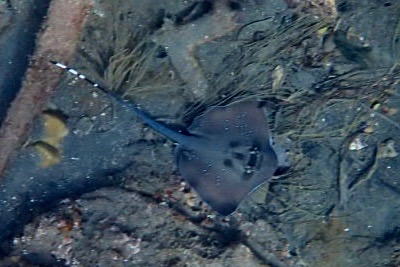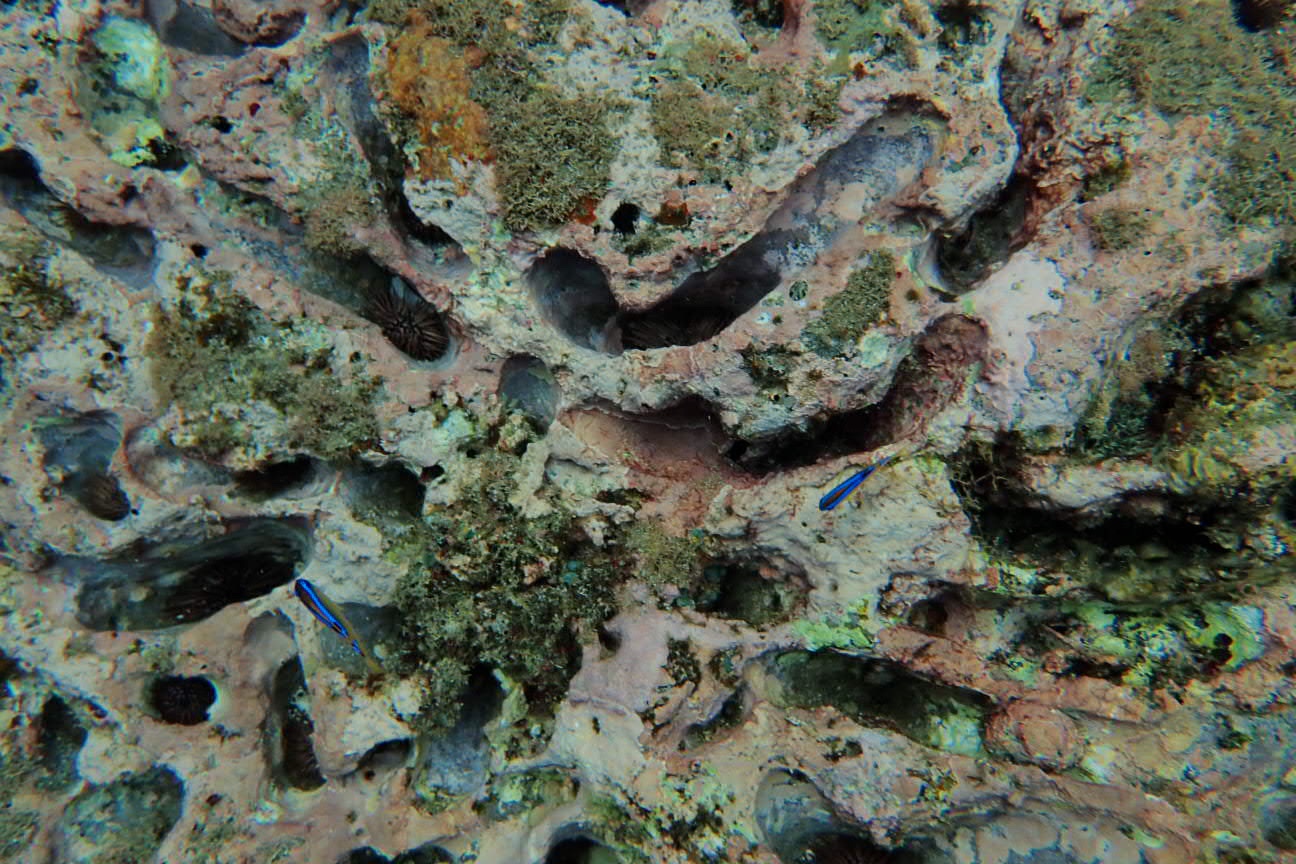Fw: 2019 Vanuatu Ambae in words and pics

|
Light Winds to
Ambae
Zoonie’s log records winds of 5 to 8 knots as we followed Nichola across to the little island where the sleeping volcano, Manaro Voui suddenly awoke from its slumbers in September 2017 and again the next year in August 2018. A pyroclastic cloud and toxic fumes forced the 11,000 strong population to scatter to other islands until the activity died down. You can see why the American novelist James Mitchener referred to the island as looking like an upturned boat; from the photo it resembles a long keeled hull with a nice counter stern. He thought the island the most beautiful in the world but touring this fascinating archipelago as we are it is impossible to give one single island the honours. We are discovering natural beauty, kind and friendly people, well-groomed villages and lovingly tended gardens wherever we explore. If one or two villages appear to be litter strewn it is packaging from trade products exported to them which they would not have had a use for in the past. The natural rubbish that comes from their home grown products is either burned on a daily basis or rots down over time. They need to learn from outsiders that modern rubbish does not decompose in the same way. If a very few villages appear untidy it is hardly their fault. We approached two bays on the north eastern tip of the island and we had a choice. We could creep along the narrow transit where a shallow channel had been blasted through the dormant volcano rim into the deep secure lagoon in front of Lolowai village, risking touching the bottom estimated to be no more than two metres down, or we could anchor to the right of a high rocky promontory with plenty of room in effectively our own Vanihe Bay, so you would be right in thinking we chose the latter. The water was calm and the heavy black sand provided a secure holding and within minutes both dinghies were in the water ready for our first visit ashore. The very short journey around the heavily wooded promontory was awe inspiring. Beautiful mature and healthy trees of many kinds clung tightly to their unlikely bed and hundreds of fruit bats voiced their disapproval of our motors by wheeling and diving above us making a terrific screeching din. Satisfied they had made their anger felt they returned to their upside down position in a fine leafed pine tree, their blonde bellies and brown bodies noticeable against the soft green foliage. As we reached the end of the cliff face crabs of all sizes scurried up the burnt ochre ash rock and we could see this would be a spectacular place to snorkel. For fun really we lined up the dinghies with the two triangular transits and leaving the green buoy to starboard motored cautiously in to this new haven. The second pole had lost its triangular topmark but thoughtful locals had kept the undergrowth at bay and the pole was clearly visible. Edison and his friends met us and we chatted a while. He told us 8000 of the islanders had returned as complete families leaving 3000 still abroad, many with children at the High School in Santo (Luganville, where we had cleared in is also known as Santo as is the island it sits on Espiritu Santo). He had been back for seven months after his stay in Narovorovo. He gave us permission to walk where we wanted and we strolled to the well-equipped hospital and spoke with some of the staff there. A desalination plant and small field of solar panels provided by Japan were out of action for need of maintenance and spare parts. Under a giant banyan tree the daily market was laid out but we had plenty of papayas and kumara, however Ken rummaged in the undergrowth and found us a beautiful coconut which he then husked on his foredeck and loaned Rob his grater, so at last we had grated coconut once more. Memories of Fiji came flooding back again. Legends are commonplace in these islands where natural processes are all powerful and people have created their own explanations for events over which they have no control. One legend concerns the Lombenben volcano and its lakes. The cultural hero of the island, Tagaro who is thought to have arrived from Samoa around 1400AD may well have found inhabitants here already. Carbon dating suggests the Lapita culture were in the area before 500BC. The legends tells how Tagaro removed the volcano from Mt Lombenben and planted it on Ambrym, then drowned the three main fiery vents by submerging them in water, the two largest of the three lakes within the caldera representing Lombenben’s eyes. Another delightful legend tells the story of chief Vevineala who had risen through his four ceremonial grades to the top. With many pigs (apart from the 25 he had killed at each of his four grade ceremonies) and 10 wives he was wealthy but childless. One day he was on his way to trade pigs on Maewo Island when his clothes slipped revealing he was in fact a woman; with considerable pig breeding skills it seems. There was a particular reason we were really pleased to have anchored in the bay instead of the lagoon. That evening Ken and Bron came to us for supper, this alternating of evenings on eachothers’ boats was becoming a delightful habit. We sat in the cockpit supping gin cocktails when we witnessed one of the most beautiful sunsets we had ever seen and would have missed if we were tucked behind ‘fruit bat hill’. The photos will testify. Next day we were ashore early, bats allowing, to save the midday hours for a snorkel. The charming lady in the shop came up with fresh eggs but no bananas so we went walkabout up the track leading away from the village and back towards our bay. Back near the shore and laden with sufficient bananas and coconuts, we met a young man helping a little old lady who was clinging for dear life on to her zimmer frame. Her pretty face revealed a life of struggle which was now replaced by a dependence on her family to look after her and judging by the tenderness the young man was showing her she would be alright. Our first snorkel was around ‘Bat Hill’ and no sooner had we plopped in to the water than Bron and I spotted a ray, with a black and white stripped tail, lying on the bottom. It was a first for us to skirt the submarine rock of a volcanic cliff and it was fascinating. Many brightly coloured lichens clung to the rock and we explored right into one cave finding grooves carved into the rock each being the home of an urchin. Crabs thrived and scampered everywhere and there was a good variety of fish. In the lagoon we explored along the submarine volcano rim more for novelty really than to find anything new. Back into the dinghies we went to ‘our’ beach for a stroll and a closer look at the extraordinary volcanic rock cliffs before another swim between two protective rocky outcrops at the far end of the beach revealed a beautiful many coloured coral garden and plenty of fish set within a thick bottom of ash. That evening it was Bron’s turn to delight us with Mexican Wraps for supper but not before Rob, true to his decision to do no more fishing, handed over all his fishing gear to Ken who was so pleased he thought Christmas had come early. It was an eventful evening in more ways than one. Making our way back to Zoonie I found my vision was darting from side to side and I hoped a good night’s sleep would rectify the effect two of the “special” little chocolate cakes I had eaten was having on me. Fortunately it did! As we sailed away the next morning I was assured that the legends and customs of little Ambae would continue as long as its people returned with such faith and loyalty despite nature’s wrath. Again many thanks to Bron for her permission to use her lovely pictures and apologies for the fact the pictures arrived long before the text, but I have no doubt you will sort it out!
|


